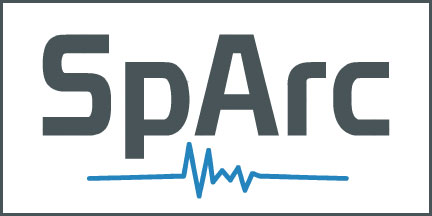
The Spectra Archive (SpArc) system is a development project of
Indiana University's Scalable Compute Archive.
Data Collection
The data in this archive was gathered on the Kitt Peak National Observatory’s Mayall 4m telescope taken with the Fourier Transform Spectrometer (FTS) during the period from 1975-1995. The FTS produced spectra in the wavelength regime from roughly 0.9 to 5 microns (11,000 to 2000 cm-1), mostly at relatively high spectral resolution. The FTS was developed and maintained at Kitt Peak by Donald Hall, Stephen Ridgway, and Kenneth Hinkle (Hall et al. 1979), in partnership with the solar FTS at the McMath-Pierce Solar Telescope, developed by James Brault1.
During this period (before the development and deployment of infrared arrays), an FTS permitted observations of infrared spectra that could not be obtained any other way. More than 800 targets were observed with the 4-m FTS, many of them multiple times. Targets observed by numerous individual investigators include a variety of normal and peculiar red giants, solar type stars, M dwarfs, variable stars, and early type stars (for telluric line removal) as well as nebulae and galaxies. Observations were limited to a magnitude of K=4 or brighter at R>20,000, although some fainter targets were included at lower resolution. The spectra generally cover a relatively wide wavelength range within the J, H, K, L, or M atmospheric window, and FTS spectrometers provide the advantage of a very clean line profile compared to traditional spectrographs.
Nearly 120 refereed papers that include FTS data have been published since 1978, including nearly 20 refereed papers since 2000.
Preservation and Transfer
The bulk of the observational data was originally stored on 9-track magnetic tape in a formatthen in use at the National Solar Observatory. In the late 90's, the original data on each of 60+ magnetic tapes were converted to ascii card image format files. While the data were preserved, accessibility was limited and tedious. SpArc was developed with the intention of providing long-term storage and accessibility to this collection of observations. The data in this archive represents a valuable collection of historical observations, useful for long-term variability studies, samples of precursor objects, or other instances where the value of the data is only apparent in hindsight. Each of the observations, including low resolution images and the forward and backward FTS scans were converted to FITS format. The original metadata are preserved in the FITS headers. Where possible, actual telescope coordinates recorded at the epoch of observation have been precessed and matched to SIMBAD objects to obtain J2000 coordinates, identifications, spectral types, and photometry. In some cases, the object name recorded by the observer at the time of observation does not match the telescope coordinates. In other cases, telescope coordinates were not recorded in headers at the time. Resolving possible discrepancies is an ongoing effort, and users should be cautious in suspicious cases. Examine the header data carefully. Please let us know if you encounter questionable identifications.
How to Cite
If SpArc was helpful in your work we request that you include the following footnote and citation in your publications:
